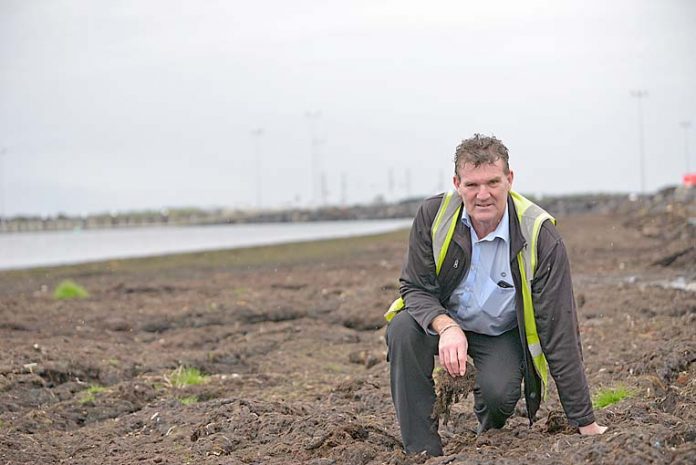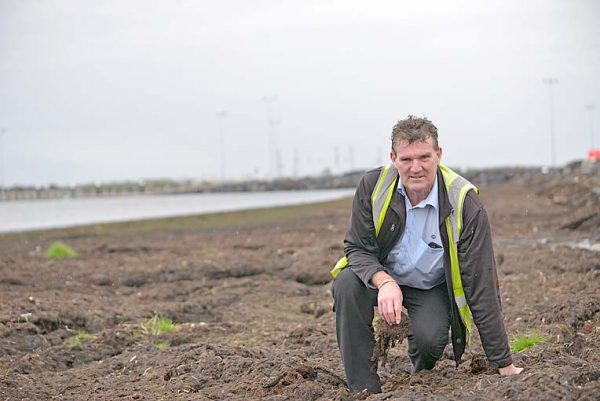

IT IS foul-smelling, slimy and causing headaches for authorities, residents and fishers at Port MacDonnell.
The issue of seaweed clogging the harbour and piling up on a stretch of beach from the breakwater to jetty was a hot topic of discussion this week.
Grant District Council will now hold further talks with the transport department on the clean-up of thousands of metres of rotting seaweed along the beach.
The issue of the clogged harbour was first raised as a red flag by the Port MacDonnell Professional Fisherman’s Association.
Port MacDonnell residents have also reported a putrid smell wafting across the seaside town.
Professional fishers have blamed the seaweed build-up for damaging boat engines after accessing the commercial wharf to refuel.
The transport department has made some inroads into the problem after removing more than 500 cubic metres of the seaweed last month from the channel and refuelling area.
“This was obviously causing all the issues with the boat operators pulling in their boats to fill up,” council works manager Adrian Schutz told this week’s meeting.
Inspecting the piles of seaweed on the beach yesterday, Mr Schutz said the transport department indicated it wanted a joint partnership with council to remove the seaweed along the foreshore.
“The seaweed aesthetically looks pretty average and is not good for our Waterfront project for people walking along the bike track,” Mr Schutz said.
He said the transport department also believed the build-up of the seaweed would continue along the beach because of the amount of seaweed in the harbour.
“There is nowhere for that seaweed to actually deposit – it just keeps on floating around in the water, hence ending up near the boat ramp and in the channel,” Mr Schutz said.
He said council needed to speak with the department regarding its financial contribution for the removal of the seaweed from the beach.
“We also have to work out what we are going to do with it. I think it will be an ongoing thing, year after year,” Mr Schutz said.
“That’s the nature of the coastline and the department believes the seaweed is growing in the boat haven, so I do not think it is going to go away.
“It will be detrimental to the fishermen when they refuel their boats.”
Deputy Mayor Brian Collins questioned whether the breakwater needed to be breached to improve the flow of the water and seaweed.
In response, Mr Schutz said breaching the breakwater would do little to ease the problem given the seaweed was growing within the harbour.
“It would not matter if you breached the breakwater or not, it will come to shore – it will not go out to sea. There are already culverts and pipes, which helps with water flow through the breakwater.”
He said the breakwater was built to make the boat haven safe.
Mr Schutz said the biggest problem facing council was where to take the seaweed.
Cr Julie Reis questioned whether the seaweed could be used to make fertiliser or other value-added products.
Mr Schutz said the carting costs of taking the seaweed to a commercial operation could be inhibitive.
But he said he would hold further discussions with a commercial operator about the issue.
In a letter to council, department of transport safety and service division acting chief operating officer Anne Alford said a hydrographic survey of the harbour and a site inspection were undertaken in May.
“The survey and site inspection confirmed that a significant amount of seaweed has accumulated inside the harbour in the vicinity of the boat ramp and wharf and in the marked channel,” Ms Alford said.
The survey also found there had been “very little” sand or seaweed ingress in other parts of the harbour, except for a small area near the end of the breakwater.
“This area is not considered to be critical for the safe operation of the harbour and dredging will not be necessary in this location,” Ms Alford said.
She said the department had engaged a contractor to remove the accumulated seaweed in the affected areas.
The works were completed last month.





